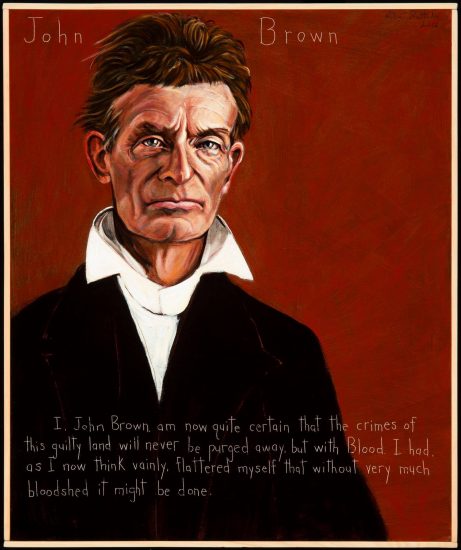
Portrait of John Brown by Robert Shetterly.
I believe that to have interfered as I have done — as I have always freely admitted I have done — in behalf of His despised poor, was not wrong, but right.
On Dec. 2, 1859, abolitionist John Brown was executed by the state of Virginia for leading the infamous Harpers Ferry Raid. Below are resources for teaching about John Brown, including a reading of his last speech from Voices of a People’s History of the United States.
The quote on the painting reads:
I, John Brown, am now quite certain that the crimes of this guilty land will never be purged away but with Blood. I had, as I now think vainly, flattered myself that without very much bloodshed it might be done.
The stunning portrait of John Brown is a painting (also available as a poster for $20) by Robert Shetterly from Americans Who Tell the Truth.
Two of the other raiders, John Copeland and Shields Green, were executed on Dec. 16, 1859.
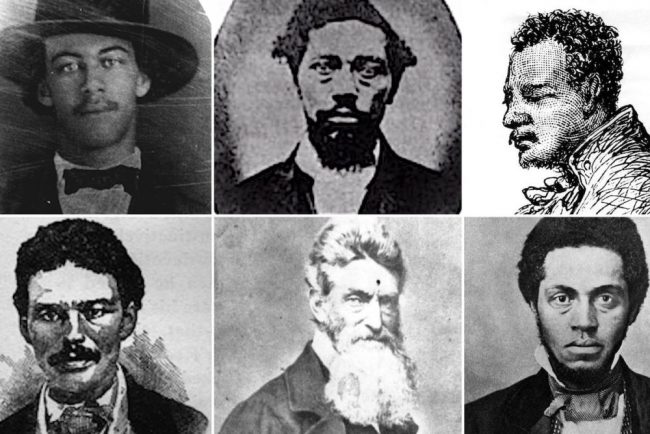
1859 Harpers Ferry raid. Clockwise from bottom left: John Anthony Copeland, Lewis Sheridan Leary, Dangerfield Newby, Shields Green, John Brown, and Osborne Perry Anderson
In the John Brown zine, reprinted in 2003 by Resistance in Brooklyn and Kersplebedeb Publishing, the day that John Brown was executed
was called Martyrs Day and ceremonies were held in 12 cities and Canada. Black people were the main organizers; businesses were closed and black armbands were worn in mourning. At Yale, students broke into the chapel and draped it in black, too late for school officials to remove it before Saturday service. In Albany, New York, thousands gathered and a four minute ovation greeted the declaration that in a just society the Virginia governor, and not John Brown, would hang. In Detroit the church bells tolled all day.
The day was also observed by the slaves. In Virginia three plantations were torched, and three of the jurors that found Brown guilty were poisoned.
Two thousand troops surrounded the scaffolds as the abolitionists were hung. The only voice to break the silence was that of an old Black woman, the only civilian allowed within miles, perhaps unnoticed because she was so old. “God bless you, Old Man,” she shouted defiantly. “If I could help you, I would.”

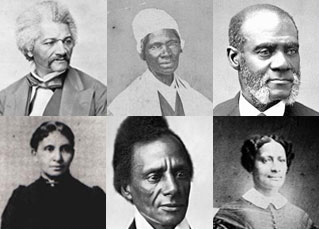

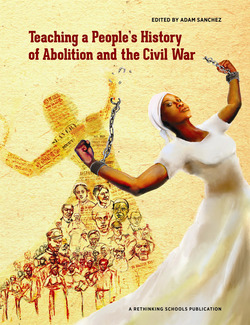
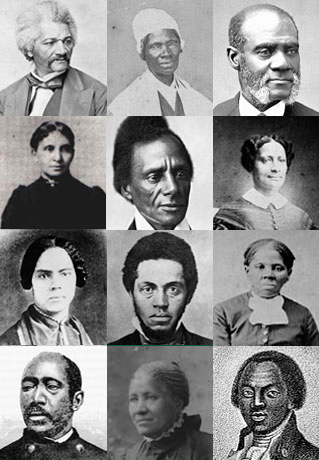

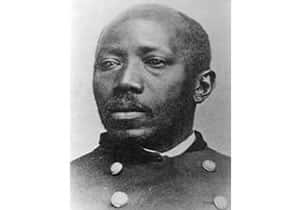
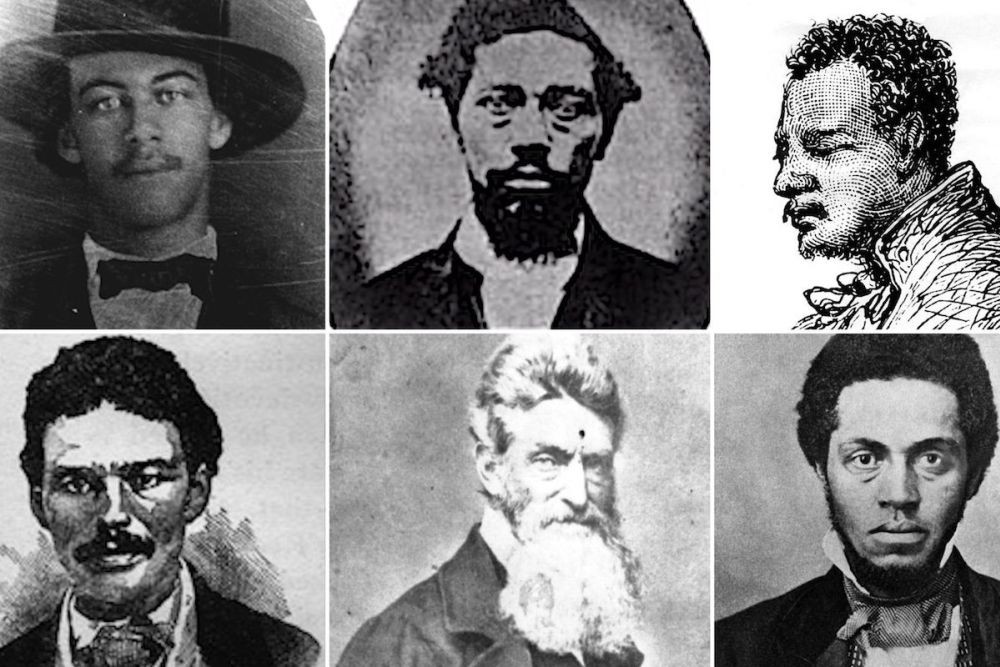
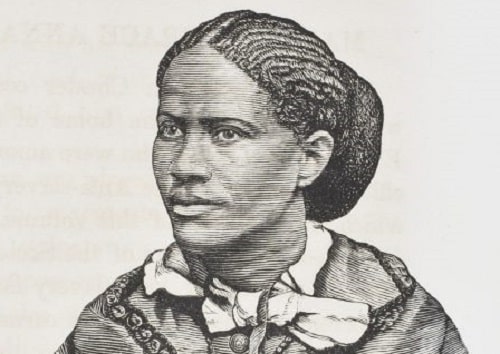





Twitter
Google plus
LinkedIn